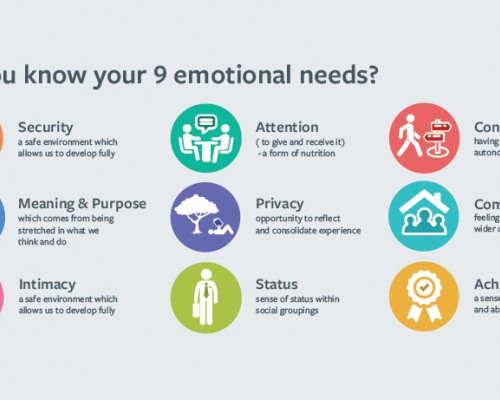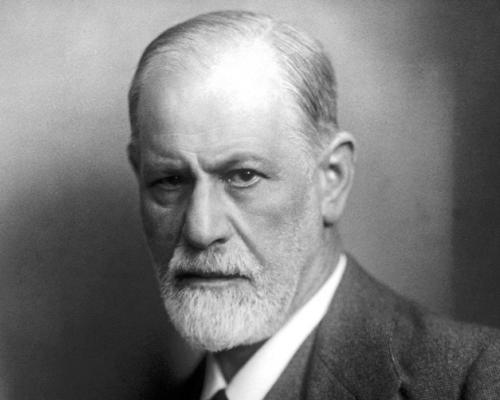Ten-minute therapy
GP Adam Lake describes how he makes effective use of HG understandings and techniques in consultations for mental health conditions.
Early on in medical school I came across the human givens, trained concurrently as an HG practitioner, and HG ideas have influenced my approach ever since. It is in general practice, where I now work, that I have most powerfully applied what I have learned. More than 90 per cent of mental health consultations in the NHS take place in primary care and, given the prevalence of mental health problems, this forms a large part of any GP’s workload.
Instead of looking at people as deficient or broken and in need of fixing (the traditional medical model), I find it far more productive and have much more job satisfaction taking the HG view of the human being as a living organism with certain needs, and innate resources to help meet those needs. Change is naturally occurring all the time and I view people’s description of their experiences in a consultation as a snapshot in time of an ongoing process, rather than as a fixed state defining the person.
This is especially true in the field of mental health, where the medical model and pharmacological treatments have their place but, in my own experience and from my appraisal of the evidence base, are not always the most appropriate approach. The person is not the disease symptom or problem. By virtue of the fact that they have arrived for the appointment, they are human beings with a hope that something can be different as a result of seeing me, and my aim is to find out what that is early on and work with them to discover how, in the next 10 minutes, to help them get their needs better met.
Clearly, adaptations have to be made as, instead of the 60–90 minutes that a full HG therapy session may last, the work takes place over a series of 10-minute consultations. Even so, the RIGAAR structure (rapport building, information gathering and giving, goal setting, accessing resources, agreeing strategies and rehearsal of success) can effectively be adapted to fit the short time frame of a GP consultation. I have found it helpful to allow a patient to talk uninterrupted at the outset, as they have often rehearsed what they want to say and interrupting is counterproductive. Usually they speak for no longer than 30 seconds to two minutes. Reflective listening on my part reduces emotional arousal by allowing them to feel that they are truly being heard and don’t need to keep repeating themselves. Very often the patient feels better just for having the chance to be listened to; this can be seen in their body language and is quite often mentioned at the end of the consultation.
Best hopes
I have found it most useful then to go straight on to goal setting, asking a question, such as “What are your best hopes from seeing me today?” This can prompt a wide range of responses from wanting to stop feeling miserable to requests for medication or tests, to wanting to have more energy or sleep better. Follow-up questions then help clarify the hoped for outcome, creating focus, given the limited time constraints, for the remaining eight minutes or so.
Once an aim is established, I continue gathering information in the usual way, including making an assessment of risk. Even as I am making an assessment and listening to the person describe the problem, I am also listening out for resources. These might be activities that they enjoy, past successes or, in the case of chronic severe mental health problems, the resources they have drawn on to get through. This week, for instance, I saw a man in his 50s experiencing severe anxiety symptoms and low mood, who said he had felt like this for 30 years and was fed up with it. I asked, “How have you managed to work as a civil servant for 25 years and support your family, despite these difficulties?” After a slightly surprised pause, he replied that he just had to keep going, as his family was so important to him, and forced himself to do so even when he felt anxious or didn’t feel like it (thus recognising his resilience and uncovering a sense of meaning and purpose – a protective factor against suicide).
Solution-focused questioning
This question and response and the follow-up chat lasted no more than a minute and was an example of how resources can be mined respectfully during the assessment part of the consultation, even in response to reports of a long history of distressing symptoms. These can be referenced later (“What will be the tiniest sign over the coming weeks that your resilience is beginning to show again?” for example) – and are more likely to have resonance, as the patient has identified the resources him- or herself.
I have found solution-focused questioning of this kind to be one of the most effective techniques to use in 10-minute consultations, with its underlying principles of using language that always presupposes positive change, building, in the next question, on whatever response the patient gives and seeking specific concrete descriptions – thus recognising that the patient knows best what their life will look like when their needs are better met. Because a person has to have sufficient time to feel heard before solutions can be offered, leaving only around five minutes for the intervention, every second counts. Unsolicited advice is rarely accepted, I have found, especially in such short conversations, and so helping patients to identify their own solutions and hopes is often more effective.
Traditionally in medical consultations there may not be a discussion of outcome beyond an absence of depression or anxiety symptoms. We know the brain works by acting on expectation and so I aim to build positive expectation by having the patient describe some specific details of how they would like things to be, using their own words to prompt them. I always aim for them to leave the room more hopeful than when they came in. This is an example that sticks in my mind from recently, and took only a minute or so:
“And when you’re feeling low and fed up, Hannah, what would you like to have happen?”
“I’d like to stop feeling fed up.”
“You’d like to stop feeling fed up. What would you like to feel?”
(Pause) “I’d like to feel relaxed.”
“And what difference will that make in your life, when you’re feeling relaxed.”
“I’ll feel calmer.”
“You’ll feel calmer. And what will your husband notice you doing that will let him know that you’re feeling calmer and more relaxed?”
(Pause for thinking, and looking up and away.) “I’ll be asking about his day. We always used to talk about each other’s days when we got home, but we haven’t done that for months now.”
When I work in this way, I either reflect back later, as a possible way forward, the idea that has been uncovered, since it is the person’s own and not mine and thus likely to be acceptable, or else trust that it is very likely to stay with them anyway, because of its personal context and meaning, making it more likely that they will make changes in line with it.
 This recent exchange with a lonely 70-year-old woman also took only a minute and fitted well into the latter part of the second half of the consultation:
This recent exchange with a lonely 70-year-old woman also took only a minute and fitted well into the latter part of the second half of the consultation:
“Let’s imagine that we’re having a chat in four weeks’ time, Carol. You’re starting to feel better; you’re waking up with a bit more energy. What will you notice that’s different in your life?”
“I’ll be getting out of the house.”
“You’ll be getting out of the house. Tell me more about that.”
“I’ll be going for walks.”
“What needs to happen for you to start getting out of the house and going for walks?”
“I need some reason to go out. I’ve thought in the past about getting a dog.”
We went on to talk about the difference it would make in her life if Carol got a dog – sense of purpose, fresh air, exercise, a living, loving creature to lavish attention on and to receive attention from. She had come up with a possible strategy for herself that was far better and more tailored to her needs than anything I could have suggested, and she became quite enthusiastic.
Rehearsal
I find that, after making the necessary assessment of the problem, determining risk and explaining and normalising the patient’s experiences, spending a few minutes exploring best hopes in some detail can be an effective way to use GAAR of the RIGAAR structure. Asking questions that allow a person to flesh out details of their preferred future in a vivid, concrete way is a highly effective means of eliciting rehearsal, even if not done in the conventional way. I often see people focusing inwards or looking away, as Hannah did, as they enter a mini-trance in order to find the answers to questions that they haven’t considered before.
I am always listening out for the needs not being met in a person’s life. Sometimes this is fairly clear to us both; other times I will use an emotional needs audit, which provides a discussion point for the patient’s hoped-for outcomes. For instance, “You said earlier that you don’t feel you have much connection to others. What needs to happen for you to begin connecting with people again?” Interestingly, when asked how things might be different, people tend to make suggestions which would meet their unmet needs, even if this has not been overtly discussed. I will also be listening for what was going on in the person’s life when problems or symptoms began. When trauma is behind anxiety symptoms, I may offer to carry out the rewind detraumatisation technique, booking the person in for a double slot (20 minutes), usually at the end of a day, when I can overrun if necessary.
Katie’s ‘strange behaviour’
Katie’s case illustrates how simply having a discussion about human needs and agreeing a practical strategy to get them better met in balance may sometimes be the only intervention necessary in a case which, from the narrower medical viewpoint, could have seemed overwhelming and complex. Twenty-year-old Katie walked into my consulting room, cradling a furry toy dog. Behind her came her very worried mum, who said her main concerns were Katie’s low mood, anger outbursts, poor sleep and “strange behaviour”, as Katie insisted on carrying the cuddly toy around everywhere she went. When I reflected back my understanding of what she had said, adding that I could see how much it was worrying her, she relaxed a little.
I asked Katie about the cuddly toy, both to build rapport and to check whether there were any delusions or abnormal perceptions around it. We talked for a few minutes and I learned that, since leaving school, she had lived at home. She spent her time watching YouTube videos until 5 or 6am, then went to bed and got up sometime in the afternoon. She enjoyed brushing and taking her toy dog wherever she went, sometimes meeting up with a friend, but spent most of her time with little focus at home. She had been referred to the mental health service and had been seen four weeks earlier. We didn’t have a clinic letter yet but, according to mum, she had been told that it was highly likely that Katie had an autistic spectrum disorder and had been put on a six-month waiting list for further assessment. She was booked to go to day therapy in the meantime but didn’t find it helpful, particularly as many of the patients had severe autism; she found the experience quite upsetting and didn’t feel that she fitted into the group.
Needs unmet
Neither Katie nor her mum could see a way forward, especially with such a long wait ahead. I explained that, whilst diagnoses could be helpful, I often found it most beneficial to start by taking a step back and look at the kinds of things all human beings need to be healthy, and to start by getting these better met. We agreed straight away on physical needs, such as water and food, and this led on to a discussion of emotional needs. Katie agreed that many of these were not met, particularly meaning and purpose, status, competence and achievement, and a sense of belonging to a community.
I wanted her to leave with a sense of hope, so asked her what she would begin to notice if some of these needs were better met. She said she would have something to get up for in the morning, and would sleep better, so that she had more energy for the day. I said that I thought these were realistic possibilities and that it would be interesting to see how she moved towards achieving them over a series of consultations. “What would be one sign that you are moving towards this future?” I asked her. She put her head on one side. “I would be going to sleep a little earlier, instead of watching videos all night, and I would be beginning to think about what I would like to do in the daytime.” Katie and mum seemed a little brighter on leaving the room.
At our next consultation two weeks later, Katie reported that she had been going to bed at 1 or 2am and had begun to see the mornings again for the first time in a while. I dwelt on this for a minute or two, drawing out from her how that felt, how she had managed it, and what difference it had made to her day. She also said that a family friend had invited her to try out some admin work in her office, with a view to a paid position if she proved reliable. This offer had been available for some time but Katie said that it was only since the last consultation that she had started to think seriously about it. We agreed that between this consultation and the next, she would make arrangements to go into the office.
Common sense
Over a series of six consultations she started going in two, then three, days a week on a voluntary basis, went to bed before midnight as she had something to get up for and, in the end, was offered a paid position. Her sleep pattern normalised; her mood improved and her mum had noticed that she no longer carried the cuddly toy everywhere with her. This was a stark example of how an approach that focuses simply on a diagnosis isn’t always helpful to the patient, whereas working towards getting the person’s basic human needs better met can lead to improvements in their day-to-day experience. It seems like common sense, but this is something that is often underappreciated.
Psychoeducation
An important part of a GP’s role is patient education. People are often worried by prevailing myths such as the chemical imbalance theory of depression, and there is often a palpable sense of relief when they receive more helpful information, rooted in research and evidence, that they can relate to their own experiences.
I have learned not to overload them with information in the short time we have available and focus, instead, on one or two key points directly related to something the patient has told me about. For instance, I might explain how unmet needs lead to emotional distress; how the cycle of depression causes increased REM sleep and its consequences; the expectation fulfilment theory of addiction; how high emotional arousal leads to black-and-white thinking; how traumatic memories are processed and can be helped; how anxiety is a useful response inappropriately activated1 or the role of inflammation in depression, leading to the withdrawal response and other symptoms.2
This allows more time for discussion specific to the person’s hoped-for outcome, and can be supplemented by handouts I have prepared and by signposting to more information.
Not the depression
Margaret rang the surgery requesting an urgent home visit, as she felt suicidal and couldn’t bring herself to get out of the house. She was somebody I had good rapport with, having helped her with rheumatological problems a few months previously. Her husband answered the door and indicated for me to go upstairs.
Margaret was sitting up in bed, looking totally miserable. She related a story with a familiar pattern – physical health problems and joint pains leading to her getting out of the house less often, which had led to more time spent at home ruminating, lower mood and the onset of the cycle of depression. She had for the moment lost hope and, having been confined to the four walls of her bedroom, was not updating her model of reality by contact with others.
After assessing her and finding suicidal thoughts but no imminent risk, I spent the rest of the visit doing everything I could to widen her narrowed sense of perspective and build a sense of hope. Responding to her description of having vivid dreams and waking up early, tired and unmotivated, I briefly told of the research experiment in which, when people with the same symptoms as her were prevented from going into REM sleep, the depression lifted within days.
This got her attention enough for me to explain that she was not the depression – it was a process which required certain patterns of thought and action to maintain – and to explain the cycle of depression. I then asked her solution-focused questions about what she would notice when the depression had lifted. I asked about some Buddha statues I noticed on her shelf, and that led onto a discussion about meditation and breathing, which provided a window of opportunity to teach and practise 7:11 breathing, framed as an ancient breathing technique.
I include this story as I could see a definite shift when I was explaining the cycle of depression; this piece of information, she told me a few weeks later, was what gave her motivation to try something different. Once the flicker of hope had been lit, it was easier to fan it into a flame with the specifics of what she would notice when things were getting better. I rang her to follow up a month later and she said she was feeling much improved, had been out of the house most days and was able to recognise a depression thought as separate from herself.
 The hanging baskets
The hanging baskets
Another case where identifying needs not met and facilitating the patient to develop their own strategy to meet them, all achieved in a 15-minute home visit, was that of Frank. A lunchtime visit had been requested by a family friend, as Frank was expressing suicidal thoughts.
On my arrival, I found Frank sitting in the front room, looking thoroughly miserable, his wife in the chair next to him. His wife had dementia and Frank was her sole carer. He made little eye contact with me as he told me that he was useless, couldn’t do anything, was letting his wife down and there was no point in going on. He was feeling tired, had no energy and even getting up to make a cup of tea was a big effort for him. There were quite a number of tablets laid out on the kitchen table; he assured me that he had been getting mixed up but initially I wasn’t convinced that he hadn’t got them out in preparation for taking an overdose. This was a situation where managing risk was crucial, but so was inspiring a sense of hope.
It didn’t seem the time for long explanations, so I acknowledged that being a carer for his wife with dementia must be absolutely exhausting, one of the most stressful experiences I could imagine. I quickly explained how stress and worry overload the brain, causing us to have more dream sleep than normal, and that some people remember dreaming more while others don’t but, either way, the brain is active and restless overnight, leading to waking up feeling exhausted and miserable. He looked at me then and said that he had, indeed, been having vivid dreams and had been waking up through the night and feeling in the mornings exactly as I had described. We talked about how getting stuck for a while in this state is a very human vulnerability and seems to be one of the ways the human brain may respond to increased stress.
I asked how he hoped things would be different for him once he had started to come out of this state again, and the first tiniest signs he would notice. He said he hoped he would have some extra help in place to care for his wife, as he was really struggling, and this would free him to be able to spend some time in the garden; it was important to him to keep it tidy and attractive. This led to a discussion about what exactly he would be doing, and I persisted until he had described two concrete actions – weeding the front path and replacing the dead plants in the hanging baskets – in enough detail to experience in his imagination doing these things.
I arranged same day emergency social care, via the rapid response team, for a care package to be put in place, and also urgent community mental health team help in view of the active suicidal thinking – although, after assessment, I was satisfied he had no imminent plans to harm himself and also had the sense that he was beginning to feel hope and that the activities we had identified would help get his needs met better. When I saw him two weeks later he had been discharged by the mental health team, as he was not suicidal; a care package was in place; and he had weeded his path, put new colourful blooms in the hanging baskets and was much more back to his normal self.
Changing the meaning
I am often surprised by how quickly people can improve once their needs start being met. Of course, it doesn’t always happen this way, and I see plenty of people who have experienced depression for many years. However, using solution-focused language can begin to alter perceptions and, over a series of consultations, these changes do add up. For example, I saw this week a woman in her 30s, who told me that she had been depressed since her teenage years and had attempted suicide at that time. She had recently reported to the police details of serious abuse that had occurred at that time, which had led to a trial. Clearly, preparing for the trial had brought up a lot of particularly difficult memories for her. She said desperately that nothing had worked for her; she couldn’t see things ever getting any better (clear black-and-white thinking) and that, although she wasn’t actively suicidal, she would be glad if she got a terminal illness.
During information gathering, I reflected that she had come through some extremely difficult times, and asked what it was about her that had allowed her to get through it all and still have enough hope to come and see me today. She was surprised, as she hadn’t thought of herself as hopeful, and initially said it was her religion. This led to a brief discussion about how her religion was a source of strength to her, and then the consultation moved on.
She was looking down, talking into her lap, but a moment later her head suddenly snapped up and it was clear that she had had a realisation. She said, “Actually, I do know what has been keeping me going! It’s the motivation to do everything I can to stop others going through the same things as I have.” She went on to talk about how that had given her the strength to report the abuse, and how she was actually feeling a bit better for having taken action, and that, as a result, the traumatic memories had become less vivid for her, as they had taken on a different meaning. She then spontaneously started talking about hopes for the future related to this motivation, including a college course and volunteering roles.
At the end of the consultation, sounding surprised, she said, “You know, I do feel more positive about things!” and remarked that she would manage to get through these difficult months because that is what she did. I see this as an illustration of how small but significant shifts can take place in a 10-minute consultation just by asking the type of questions that focus attention on people’s resources, even in the most difficult situations – and without unduly extending the length of the consultation.
The cross-country run
A case where normalising was the key intervention was that of 12-year-old Anna, who came to see me with her mum. Anna was on the waiting list for referral to the local child and adolescent mental health service, due to severe anxiety, which had prevented her from going to school, reduced appetite and concern about weight loss. Anna and her mum talked for two minutes about their fear that there was something wrong with Anna, that she was going mad and needed to see a psychiatrist and that she would never be able to go to school again. I reflected back their concerns, including how worried I could see this was making them, and then gathered more information.
I learned that the anxiety had begun shortly after Anna started her first year in secondary school. She had experienced some verbal bullying, which had since resolved, but at the time it had really upset her. One day, soon after the bullying, she was set to run a cross-country race but unexpectedly felt so anxious that she had to go home from school instead.
 As we talked about various things, I learned that she had been one of four children picked in her top year of primary school to take part in an educational TV programme, and that she had spent a week abroad in the summer of that same year, with relatives she hardly knew, to help her with learning the language – clear resources to draw on. Key was the moment when I said that I thought she was responding in a very human way to an extremely stressful time in life – by no means minimising the symptoms and fully recognising that changes were needed, but nevertheless moving what was happening to her back into the realm of ordinary human experience. The relief in the room was palpable.
As we talked about various things, I learned that she had been one of four children picked in her top year of primary school to take part in an educational TV programme, and that she had spent a week abroad in the summer of that same year, with relatives she hardly knew, to help her with learning the language – clear resources to draw on. Key was the moment when I said that I thought she was responding in a very human way to an extremely stressful time in life – by no means minimising the symptoms and fully recognising that changes were needed, but nevertheless moving what was happening to her back into the realm of ordinary human experience. The relief in the room was palpable.
Since Anna was a keen cross-country runner, I asked her what her heart rate and breathing were like on a long race, and discussed how that was a useful response to the demands she was making on her body. I then asked her what a useful response would be if a lion jumped in through the consulting room window (run!) and how, on some level, her body thought it was trying to do her a favour by getting ready to run when she felt threatened, even if the situation didn’t require a physical response.
Scaling the ‘running feeling’
I asked her about times when she had felt calmer and she told me about a lesson when she had felt anxious outside the classroom but had gone in anyway, then surprised herself by noticing that she felt okay. I explained 7:11 breathing and she practised it in the consulting room. We then agreed a plan together for her to go into school until morning break for the next week and, when she was there, to observe and scale that ‘running feeling’, thank her body for it, and be curious to see what happened if she continued doing what she was doing anyway (drawing on that exception description she had mentioned earlier).
She reported the next week that she had been to school every day, and most of the time had been pleasantly surprised that she had felt okay once she was there. Over the next two months she had a few more consultations, gradually building up the time spent at school and, with one or two setbacks, which she had overcome at the time of writing, had been to school every day for the previous three weeks, staying from 9 am until 2pm. With ongoing support from her school, all this was deliverable in five or six 10-minute consultations over a period of three months.
Stress and drinking
Teaching practical skills for reducing anxiety certainly lends itself to a short consultation.
Colin, 48, had previously been dependent on alcohol; he had stopped drinking but had relapsed, due to work stress, in the preceding two weeks – particularly easy for him because he was a pub landlord. The first consultation, which he attended with his wife, was highly challenging, as he was desperate for alcohol detox medication, which was not appropriate for me to prescribe. I advised instead on safe withdrawal from alcohol, services available and what to do in certain emergencies. He was very clear that he wanted to stop drinking again and was highly motivated, so, as part of my information gathering, I asked him how he had managed to stop drinking alcohol in the past. I reflected back at the end of the consultation what he had told me about this, the difference it made to his family life and how, from what I had heard and the way he came across to me as determined, resolved and motivated, there was a lot of evidence that he would be able to do it again.
Colin did manage to stop drinking again and then came to see me as arranged two weeks later. He asked for medication for anxiety and stress, as it was this that had led to his drinking alcohol again last time and he wanted a different way to cope. I explained the anxiety response, the limitations of medication and then I described and he practised 7:11 breathing. He said he could feel a difference within a minute or two of practice, decided to try this instead of medication, and, when I saw him four months later for an unrelated problem, he was using it regularly. His stress levels were reduced as he had made some staffing changes, and he had not had another alcoholic drink.
I hope I have shown that much can be done even in short interactions to help mental health problems, despite the increasing pressures facing primary care. Now, with the success of the first HG-based training events that have been held for GPs (see information below), I am truly hopeful that sound human givens psychological knowledge and skills will become much more widely used within primary care.
Spreading the word to other GPs
HG practitioner and GP Andrew Morrice has developed an innovative and inspiring half-day course on depression, to teach GPs the key organising ideas underpinning our approach and the skills and techniques which can be used in a 10-minute consultation. Andrew began developing the course thanks to a generous donation to the Human Givens Foundation by the Corbin family, in memory of their daughter Philippa. HG-trained GPs – Sue Beckers, Maarit Brooks, Mel Mackintosh and I – attended a half-day meeting with Andrew, followed by online discussions to help plan and contribute to the content of the course. Given the proportion of mental health consultations undertaken by GPs, this has potential to be a huge opportunity.
The first training event, held in Bath in February 2019, was attended by 28 GPs and extremely well received, with 90% of attendees rating the course and content as excellent. One GP wrote: “This meeting deserves high praise. It was a new way of thinking about depression for me and feels like it has opened up lots of doors.” Another commented, “This was an amazing course, almost life changing. The ideas in humans givens really resonated with me and my experiences with patients and myself. I have ordered some books, and may even be interested in the diploma in the future.”
A further event has since taken place in Dorset, and approaches are being made to GP education organisations in the South West, London, Lancashire, Scotland and Ireland. The intention is to make this seminar available to as wide a range of GPs around the UK and Ireland as possible, GPs being invited to the training day through their local GP education organisations as dates become available.
 ADAM LAKE is a GP in Lancashire, with particular interests in mental health and palliative medicine. He is a qualified HG practitioner, seeing clients privately when medical commitments and family life permit.
ADAM LAKE is a GP in Lancashire, with particular interests in mental health and palliative medicine. He is a qualified HG practitioner, seeing clients privately when medical commitments and family life permit.
This article featured in the "Human Givens Journal" Volume 26 - No. 1: 2019
 Spread the word – each issue of the Journal is jam-packed with thought-provoking articles, interviews, case histories, news, research findings, book reviews and more. The journal takes no advertising at all, in order to maintain its editorial independence.
Spread the word – each issue of the Journal is jam-packed with thought-provoking articles, interviews, case histories, news, research findings, book reviews and more. The journal takes no advertising at all, in order to maintain its editorial independence.
To survive, however, it needs new readers and subscribers – if you find the articles, case histories and interviews on this website helpful, and would like to support the human givens approach – please take out a subscription or buy a back issue today.
References
-
Griffin, J and Tyrrell, I (2003, 2013). Human Givens: the new approach to emotional health and clear thinking. HG Publishing Ltd.
-
Morrice, A (2014). The brain inflamed. Human Givens, 21, 2, 13–16.
Latest Tweets:
Tweets by humangivensLatest News:
HG practitioner participates in global congress
HG practitioner Felicity Jaffrey, who lives and works in Egypt, received the extraordinary honour of being invited to speak at Egypt’s hugely prestigious Global Congress on Population, Health and Human Development (PHDC24) in Cairo in October.
SCoPEd - latest update
The six SCoPEd partners have published their latest update on the important work currently underway with regards to the SCoPEd framework implementation, governance and impact assessment.
Date posted: 14/02/2024












